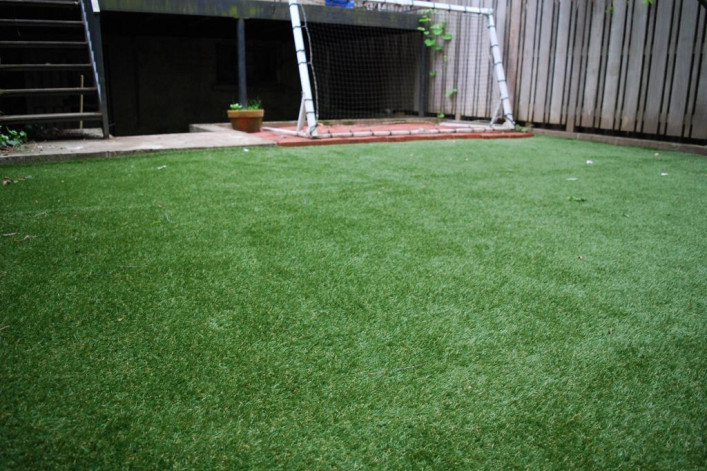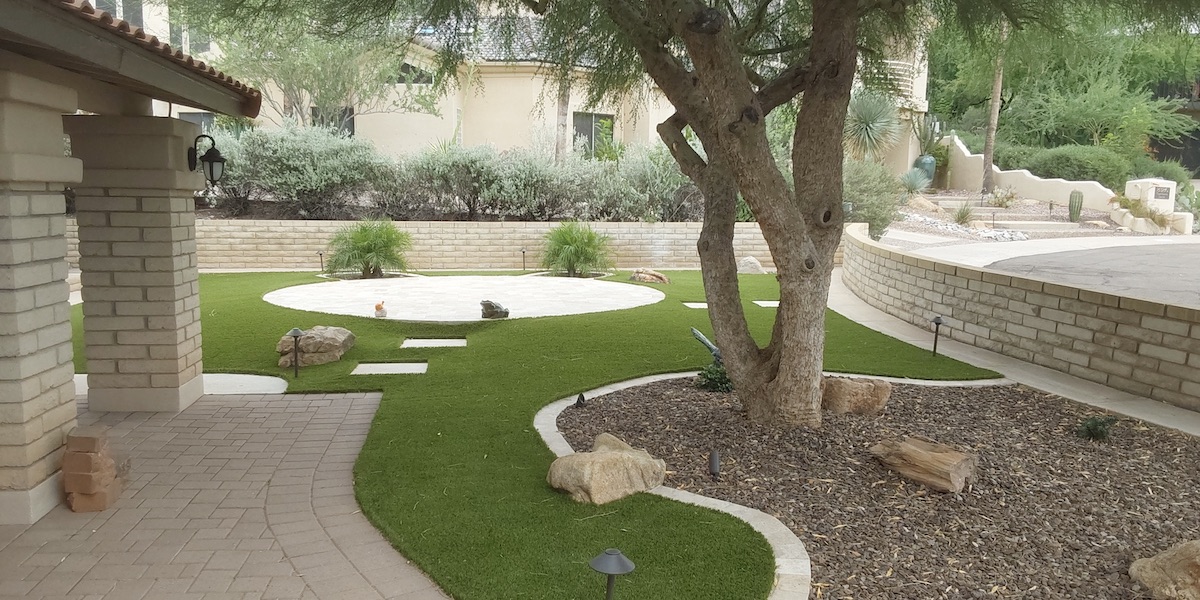Leading Reasons to Consider Artificial Lawn for a Rich and Low-Maintenance Lawn
As property owners increasingly look for sustainable remedies for outside rooms, man-made grass offers an attractive alternative to conventional grass. Its capability to preserve a lively appearance year-round without the burdens of mowing, chemical, or watering therapies makes it a useful selection for those intending to reduce maintenance efforts. The ecological benefits, including substantial water preservation and decreased dependence on chemicals, align with contemporary environmental worths. The advantages prolong beyond simple appearances and sustainability; exploring the multifaceted implications of synthetic lawn discloses a thorough approach to yard management that benefits deeper consideration.
Year-Round Greenery
Among the most considerable benefits of man-made grass is its capacity to offer year-round plant, regardless of environment conditions. Homeowners usually deal with challenges in preserving a vibrant yard due to seasonal adjustments, droughts, or hefty rainfall. Man-made yard gets rid of these problems, making sure a consistently lavish appearance throughout the year.
This synthetic choice is engineered to stand up to varied weather condition scenarios, from burning summer season heat to cold winter temperatures. Unlike all-natural grass, which may brownish or come to be patchy throughout severe problems, synthetic grass keeps its vibrant shade and appearance, enhancing the aesthetic charm of any kind of landscape.
Additionally, synthetic lawn is immune to pests and diseases that normally influence natural lawns. This durability adds to its long-lasting beauty, as there is no need for chemical treatments or fertilizers that can be damaging to the atmosphere. In addition, home owners can delight in the aesthetic benefits of a properly maintained lawn without the cyclical difficulties postured by all-natural grass care (artificial grass).
Lowered Upkeep Initiatives
Man-made lawn substantially minimizes maintenance efforts, allowing homeowners to enjoy a pristine grass without the taxing tasks related to natural yard treatment. One of the most remarkable benefits of synthetic turf is the removal of routine mowing. With no demand for a lawnmower, home owners save both time and the cost of upkeep connected with this equipment.

Cleansing fabricated yard is uncomplicated; a simple rinse with a hose or the occasional cleaning to get rid of particles is usually enough - backyard artificial grass. This simplicity of care allows homeowners to invest even more time enjoying their outdoor spaces instead of struggling over them. In recap, the minimized maintenance efforts connected with fabricated lawn make it an attractive option for those seeking a gorgeous, hassle-free backyard
Water Preservation Advantages
The significant decrease in upkeep efforts connected with man-made turf encompasses water preservation, making it an ecologically friendly alternative for home owners. Conventional lawns call for considerable amounts of water to continue to be rich and vibrant, frequently leading to extreme water usage, specifically in arid areas. On the navigate here other hand, fabricated turf removes the requirement for regular watering, dramatically decreasing the overall water usage in your yard.
By going with artificial grass, home owners can save hundreds of gallons of water every year. This change not only benefits individual families but likewise adds to wider environmental efforts targeted at reducing water waste. In locations experiencing water scarcity, the fostering of synthetic grass can play a significant duty in reducing the impacts of dry spell and making certain that important water resources are made use of more effectively.
In addition, the installation of synthetic yard can aid lower metropolitan water need, profiting the community overall. With expanding recognition of ecological issues, choosing man-made lawn works as a proactive step towards sustainable landscape design, aiding to maintain all-natural water resources while maintaining a visually pleasing outside area (artificial grass installation). In recap, man-made yard offers an engaging solution for water conservation, aligning environmental responsibility with modern landscaping requirements

Parasite and Allergic Reaction Reduction
A considerable benefit of mounting synthetic lawn is its ability to lower insects and irritants in outside spaces. Standard turf yards typically work as breeding premises for insects such as insects, ticks, and ants, which can develop discomfort and wellness dangers for family members and animals. In comparison, artificial lawn eliminates the organic product that attracts these insects, therefore considerably decreasing their populaces in your yard.
Furthermore, natural yard can harbor mold and mildew, plant pollen, and other allergens, which can activate allergic reactions and respiratory system problems for delicate people. Synthetic turf supplies a cleaner setting, reducing the potential for allergenic reactions. Unlike natural lawn, synthetic grass does not create pollen, making discover here it an exceptional alternative for allergic reaction sufferers seeking to enjoy their outdoor spaces without the danger of flare-ups.
Furthermore, the lack of dirt in synthetic grass means there is less dust and dust, further minimizing airborne irritants. This low-maintenance special info alternative not just boosts the visual allure of your backyard yet additionally advertises a much healthier outside atmosphere, enabling households to enjoy their yards without the continuous concern of insects and allergens. Thus, artificial yard is a tactical choice for those prioritizing convenience and wellness in their exterior living rooms.
Long-Term Price Financial Savings
Buying synthetic grass can result in considerable long-lasting expense savings for property owners. While the preliminary investment might appear substantial, the monetary benefits gradually can be significant. Synthetic turf eliminates the need for normal grass upkeep costs, such as mowing, fertilizing, and watering. Traditional lawns usually need considerable resources to maintain a lavish appearance, especially in areas susceptible to drought or extreme weather.
Additionally, the long life of synthetic lawn further improves its cost-effectiveness. Most top notch synthetic yard products can last 15 to 25 years with marginal upkeep, minimizing the demand for replacement or considerable repair work. In comparison, natural turf might require regular reseeding and normal treatment, which can rapidly build up in costs.
Utility financial savings are another important factor. House owners can anticipate to see lower water expenses, as artificial lawn does not require irrigation. In addition, the decrease in lawn care solutions can maximize important time and resources, enabling home owners to allocate their budgets somewhere else.
Final Thought
In recap, synthetic yard presents numerous benefits for homeowners looking for a vivid and low-maintenance landscape. Eventually, the long-term price financial savings connected with artificial lawn strengthen its standing as a useful and lasting remedy for boosting outside spaces.
Fabricated turf considerably reduces upkeep efforts, permitting house owners to delight in a pristine yard without the time-consuming jobs associated with all-natural turf treatment.The considerable decrease in maintenance initiatives connected with fabricated lawn extends to water preservation, making it an environmentally pleasant option for house owners. In contrast, synthetic yard gets rid of the demand for routine watering, considerably reducing the general water intake in your lawn.
In locations experiencing water scarcity, the fostering of fabricated turf can play a substantial function in minimizing the effects of drought and making certain that valuable water resources are made use of more effectively.
With expanding recognition of environmental problems, selecting fabricated turf serves as an aggressive action towards lasting landscape design, aiding to protect all-natural water sources while maintaining a visually pleasing outside room.